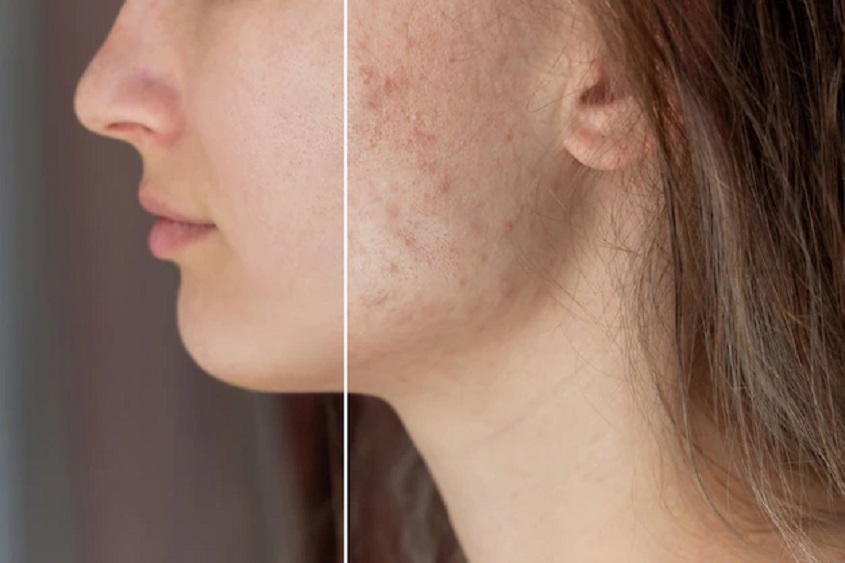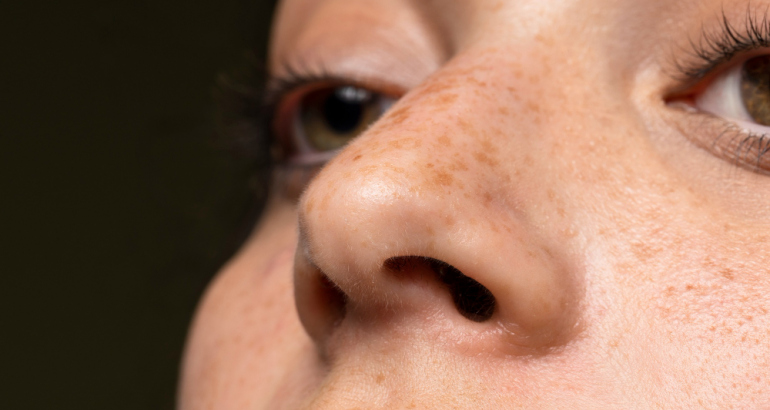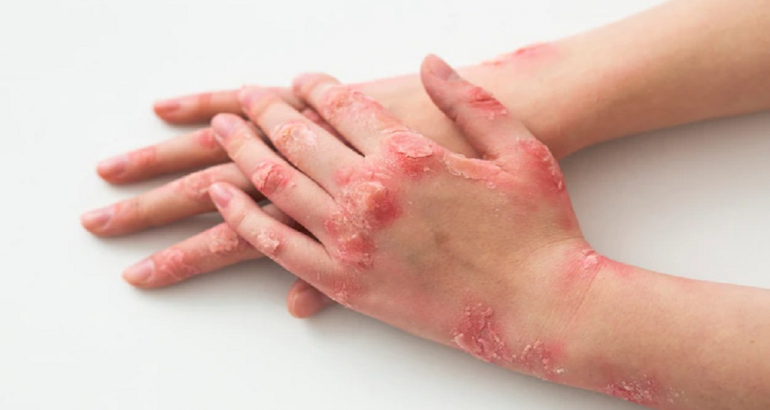Acne vulgaris is an inflammatory condition that affects the oil glands. Blackheads and whiteheads, red lumps, and pus-filled lesions are also possible symptoms. Acne is influenced by hormones, genetics, and certain environmental variables. Acne is frequently followed by pigmentation (blemishes).
What Causes Acne and How Can It Be Prevented?
Although acne shows on the surface in the form of whiteheads, blackheads, and irritation, the problem truly begins beneath the skin. Sebaceous glands are tiny structures found beneath the skin.
Although acne shows on the surface in the form of whiteheads, blackheads, and irritation, the problem truly begins beneath the skin. Sebaceous glands are tiny structures found beneath the skin.
These glands secrete a lubricating oil (sebum) that lubricates your skin and hair.
Sebum normally flows through the hair follicle without causing any difficulties. If the follicle becomes clogged, the sebum inside begins to pile up, resulting in pimples.
Too much sebum production, dead skin cells or makeup blocking the exit point, or too many skin cells being lost within the follicle are all possible causes of follicular blockage.
Acne develops when the follicle becomes clogged and the sebaceous glands continue to generate sebum. The follicle widens as the sebum has nowhere to go, causing some of the pain and irritation in the area.
Furthermore, acne-causing bacteria thrive in this environment, and their numbers increase.
Although clogged follicles are the major cause of acne, the breakouts itself can appear in a variety of ways, resulting in a variety of Vulgaris.
Different Types of Acne
Whiteheads: This type of Vulgaris occurs when the follicle near the skin’s surface closes off. This causes sebum to build up inside the pore, resulting in a white coloring caused by sebum, dead cells, and germs just beneath the epidermis.
Blackheads: Blackheads appear when a follicle becomes clogged but isn’t completely blocked from the surface. Instead, the follicle’s margins extend, making the pore appear larger. The dark pigmentation of blackheads isn’t due to dust or debris, contrary to popular perception. Instead, the colour is primarily due to sebum oxidation, which causes it to darken.
Pustules: Pustules are a kind of Vulgaris in which the infection in the follicle has progressed to the point that dead skin cells and puss have built up inside. This sort of pimple is usually inflamed and uncomfortable.
Cystic: Cystic Vulgaris is one of the most severe forms of the disease. Sebum and pus begin to accumulate inside the skin in this situation. Rather from breaking through the skin’s surface or being healed by the immune system, the Vulgaris continues to develop deep into the skin, in some cases rupturing the sebaceous glands. Because it is too deep for most topical treatments to work, this is the most difficult variety of Vulgaris to cure.
The signature treatment option available
- Chemical peels
- Comaedone extractions
- Carbon laser therapy
- Microdermabrasion
- LED light therapy
- Signature Anti-Vulgaris Medifacials
- Jet M Medifacials
ACNE SCARS– When a breakout penetrates the skin deeply and destroys the tissues beneath it, scars occur.
It’s critical to identify the type of scar you have before attempting to treat it. Therapies respond differently to each kind, and some treatments are better for certain types than others.
Scars that are atrophic or depressed
The face is the most prevalent site for atrophic scars. A depressed scar is visible beneath the surface of the skin. They occur when not enough collagen is produced during the healing process of a wound. Atrophic scars are divided into three categories:
Boxcar
These scars are wide, U-shaped, and have sharp edges. They can range in depth from shallow to deep. The better they respond to skin resurfacing treatments, the shallower they are.
Pick an ice cube Ice pick scars are small, V-shaped scars that can penetrate the skin deeply. They have the appearance of little round or oval holes, similar to a chickenpox scar. Because they can extend well into the skin’s surface, these scars are the most difficult to cure.
Rolling
These are large depressions with rounded edges and an uneven, rolling look. Scars that are hypertrophic or elevated Acne scars on the chest and back are the most prevalent. They are caused by too much collagen during healing and rise above the surface of the surrounding skin.
Spots of darkness
A scar is a discoloration left behind after a pimple has healed. The purple, red, or brown marks will vanish on their own after a few months.
Different treatments available-
- Dermabrasion
- Chemical peels
- Laser resurfacing
- Fillers
- Microneedling



